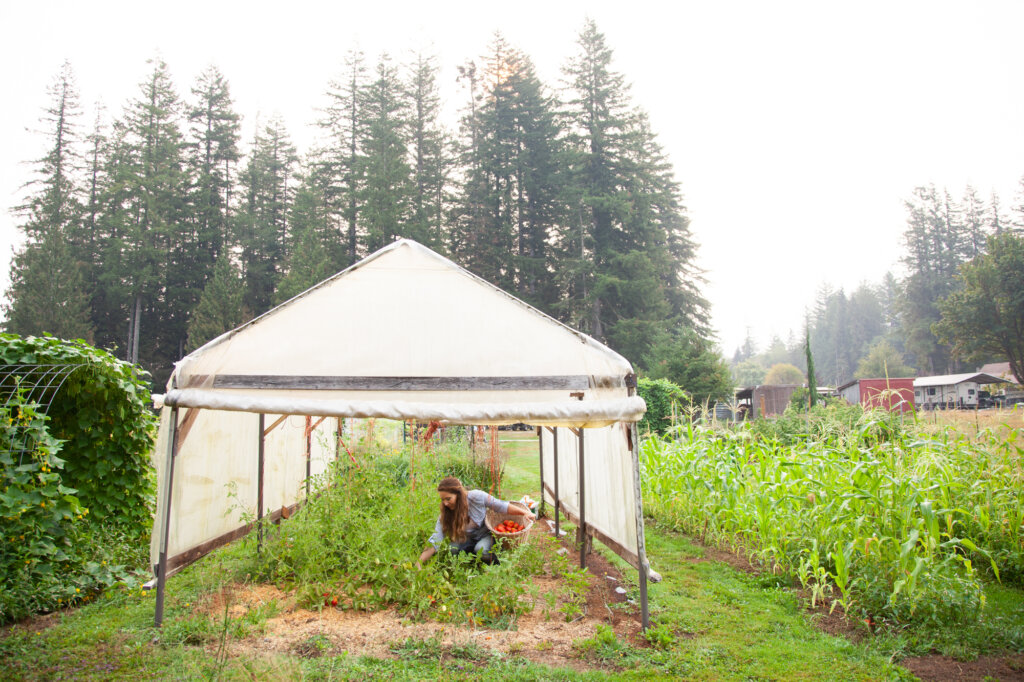Raising a year’s worth of food is something I get asked about quite often, especially what it takes and what’s involved. So, we will examine the original meaning of some poor gardening advice and bust some common garden myths people have both regarding gardening and especially when it comes to producing enough of a crop to take you and your family through an entire year.
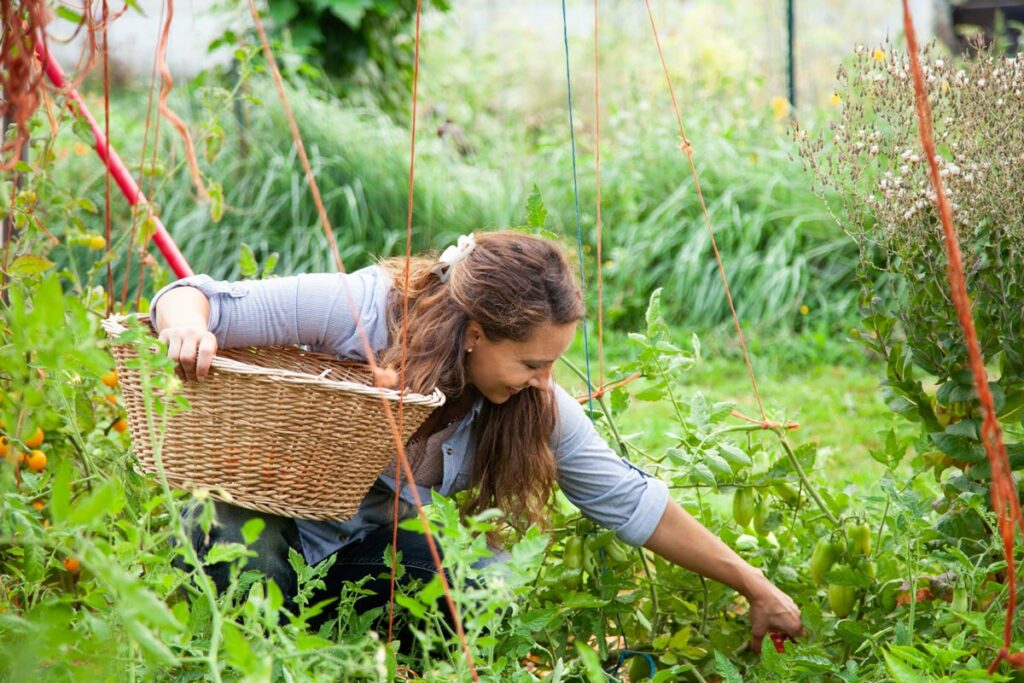
Listen to Episode #136 of the Pioneering Today Podcast, where we teach families how to grow, preserve and cook their own food using old-fashioned skill sets and wisdom to create a natural, self-sufficient home, with or without the homestead.
Table of Contents[Hide][Show]
- The Importance of Busting Garden Myths
-
Popular Garden Myths+−
- Myth #1 – You Have to Have a Huge Yard or Acreage
- Myth #2 – You Need a Greenhouse to Seed Start
- Myth #3 – Gardening Takes a Ton of Time
- Myth #4 – You Can’t Go on Vacation
- Myth #5 – Gardening Is Too Hard
- Myth #6 – Coffee Grounds Acidify the Soil
- Myth #7 – Addressing the Mulch Wars
- Myth #8 – Plant Potatoes on Good Friday
- Myth #9 – Plants Should Be Watered Daily
- Myth #10 – Tree Wounds Need Dressing
- Myth #11 – Newly Planted Trees Need to Be Staked
- Myth #12 – Place Gravel in Containers for Better Drainage
- Resources
- Other Articles You May Enjoy
The Importance of Busting Garden Myths
When it comes to growing your own food, you’re going to find almost everyone has an opinion and loves to share it, which can be good or bad, depending upon who is giving the advice. Just like anything, you have to take advice with a grain of salt and decide what will work for you and your garden right now.
For instance, someone may have great success with strategies used for raised bed gardening that may translate poorly for your in-ground crop rows. Or maybe one person’s garden plan may not be suitable for your family size, so knowing how much to plant per person for a year’s worth of food would be better guidance to follow rather than mimicking your neighbor’s plan.
I’m a huge fan of testing things to see how they work for me, and I have tried a lot of common gardening advice. Over the years, I have researched and conducted many tests, some with great success and some without. Now, you can shorten your learning curve by understanding some common garden myths people have when it comes to raising a year’s worth of food for their family.

Popular Garden Myths
Let’s explore and debunk common garden myths that often lead to confusion among gardeners. By looking at evidence-based gardening advice, you can separate fact from fiction and ensure the success of your garden.
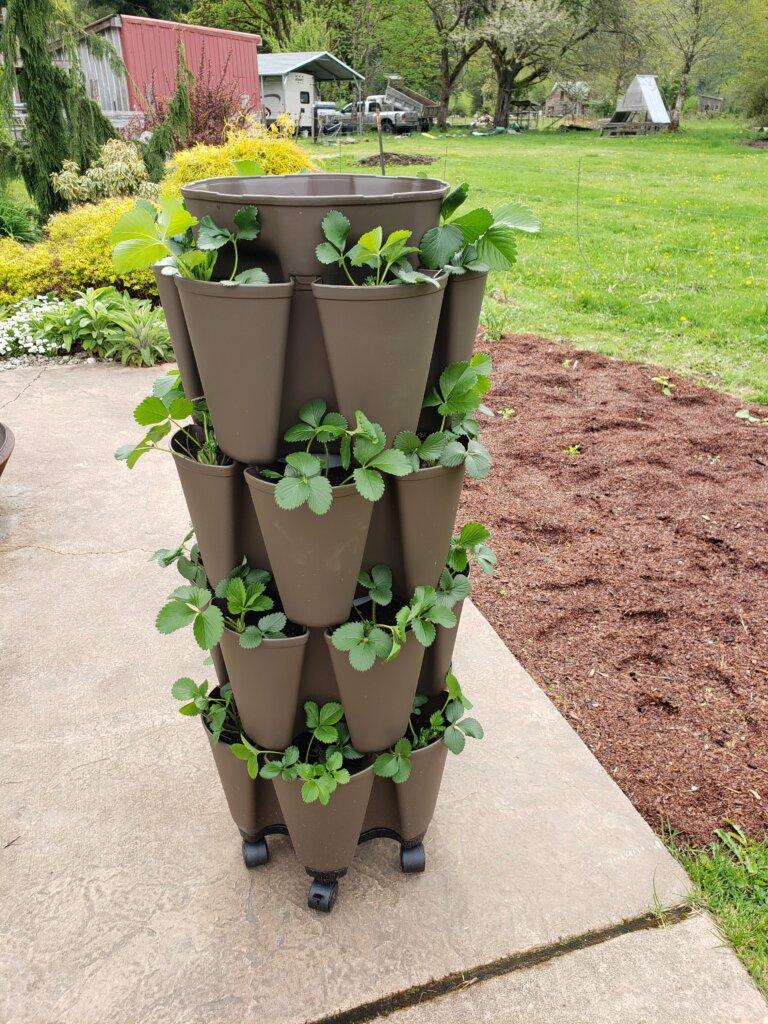
Myth #1 – You Have to Have a Huge Yard or Acreage
There is this assumption that you need a lot of acreage or a very large yard to grow food and have livestock. This is not necessarily true; in fact, how to grow a large-scale garden and livestock without acreage proves that self-sufficiency can be accomplished on a small scale.
Some creative ways to grow food, like vertical garden planning and expanding growing spaces, should definitely be considered. My hope is that anyone can grow food, even in the smallest of spaces.
We grow a year’s worth of tomato products for a family of four in a ten-by-twenty-foot area. We also grow fifty percent of our fruits and veggies in our fenced yard, which is twenty by forty feet.
This post on the best vegetables for small spaces and self-sufficiency gives tips for greater yield in less space. Container gardening for vegetables – everything you need to know is a great method to provide your family with a nice variety and quantity of fresh vegetables.
Having a plan for your space is key. My biggest garden planning mistakes and how to avoid them are helpful.
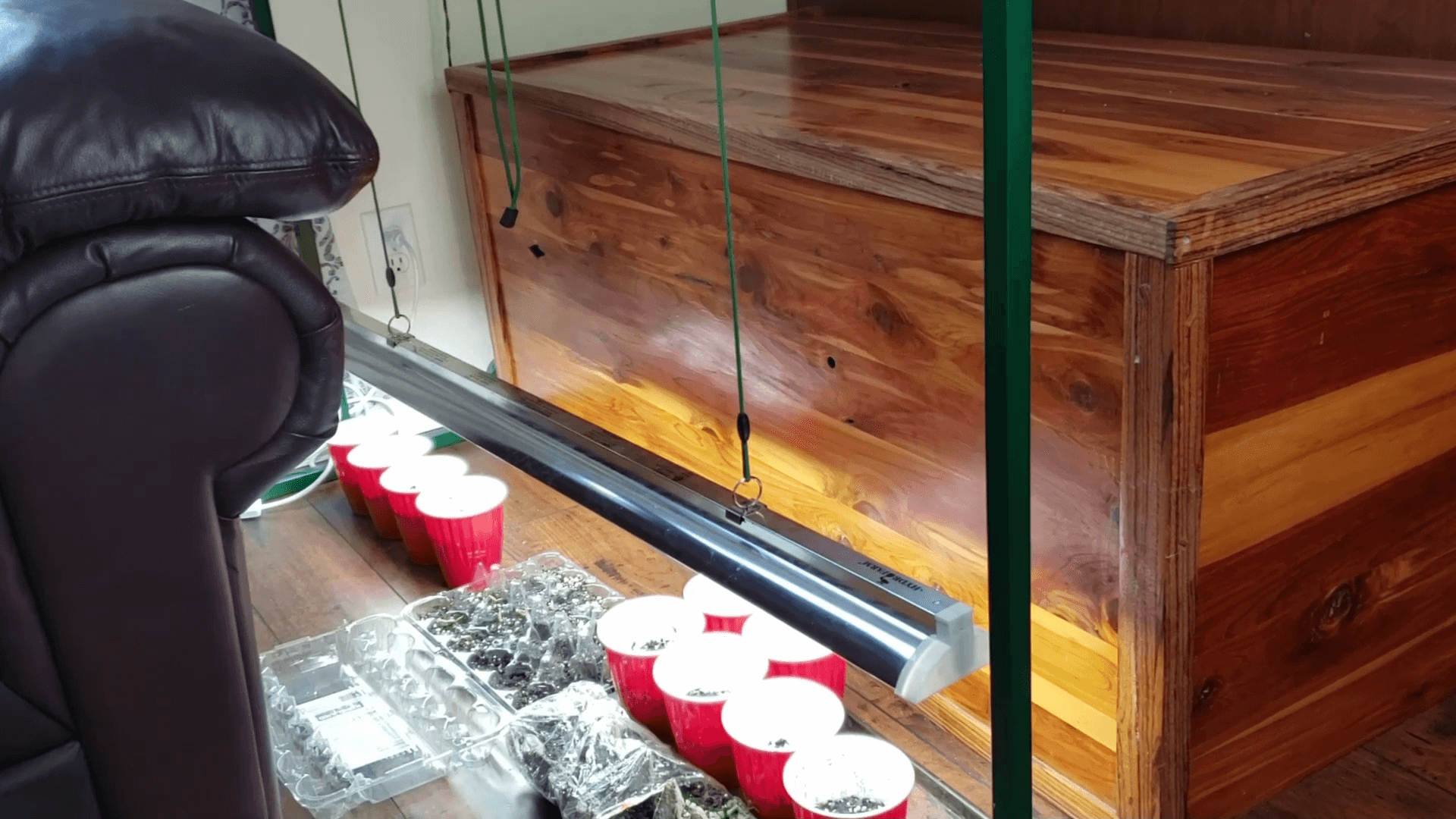
Myth #2 – You Need a Greenhouse to Seed Start
While a greenhouse can be a lovely addition to your food-raising efforts, it’s not necessary, especially not for starting seeds. My best seed starting containers will give you tips to start your seeds with space in your home that doesn’t require a greenhouse.
Seeds germinate best under a controlled environment, and your attention to temperature, water and light is key. This can be done in any space where you can monitor your seedlings and manage the climate.
I grow all of our tomatoes from seeds in a two-foot wide by four-foot long section in our living room, including the grow light. Check out this ultimate seed starting guide for planning, starting and mistakes to avoid in your available space.
When you get the timing down for potting up your seedlings, growing them to full size indoors is unnecessary. Many seeds can be sown right into the garden soil, and a greenhouse is once again not necessary.

Myth #3 – Gardening Takes a Ton of Time
This homesteading mama worked a day job, put in 30+ hours a week at the same time on this podcast and blog, and still ran a fully functioning homestead with my husband and two kids, cooked meals, cleaned house, and lived life. My friends, you can do it too!
Does it take some time to grow your own food? Yes, it does. Does it take a ton of time? No, it doesn’t.
I developed these time-saving tips for new gardens to help with time management. When we plant our annual garden in the late spring, it takes us about two to three hours, but that’s only once a year.
We average about one to two hours a week during the growing season. Divide that out, and it’s as little as ten to fifteen minutes a day to raise your own food. There are times when these eight tips for getting it all done during the harvesting and preserving season come in handy as more time is required.
It will take more time to put in new garden beds, build a greenhouse, or figure out how much time per week to raise a year’s worth of food. But that is generally a one-time deal with little maintenance.
Keep in mind planning and maintenance go a long way. Do what you can at the time, don’t beat yourself if it’s not what you wanted, plan for next year and accept the season you’re in right now.

Myth #4 – You Can’t Go on Vacation
Myth busted! We raise all of our own meat, grow over fifty percent of our fruit and vegetables, and are gone at least two full weekends every month during the summer and a full week for our yearly family vacation.
My tips on how to take a vacation when you have a homestead work well for us; give them a try!
Once again, a little planning goes a long way. Ensure the garden is well watered with deep watering practices using soaker hoses. Timers on faucets work great. A trusted neighbor who can water for you or a responsible teenager looking for a little cash is always a good option.
With our livestock, we ensure their watering containers are large, or we have multiples that they can’t tip over. We use two large tubs for the cattle and one large tub for the pigs. We also have multiple watering containers in the chicken coop.
You can also use automatic waters, but I’d still recommend having someone check on the levels just in case of malfunction if you’ll be gone more than one night.
Our cattle have plenty of grass during summer, so we do not need to supplement their feed. We know how much our flocks eat each day, so we can set out extra feeders with enough food to feed them until we return.
If it’s just overnight, we set out extra food and water and take the night off. If it’s longer than one night, we always have a neighbor check on things and provide more feed if needed.
We have laying chickens, so our friendly neighbors get to keep the eggs, score! Bartering for chores is a wonderful method to use with your neighbors. If you have a cow that needs to be milked, let them keep the milk in trade for milking, it’s a win-win!
You can also have someone house-sit if you wish. We’ve never gone this route, but I know others who have, especially if you’re gone for more than a week. You may think you are too busy to take a vacation, but with some forethought and planning, it’s possible and worth it.
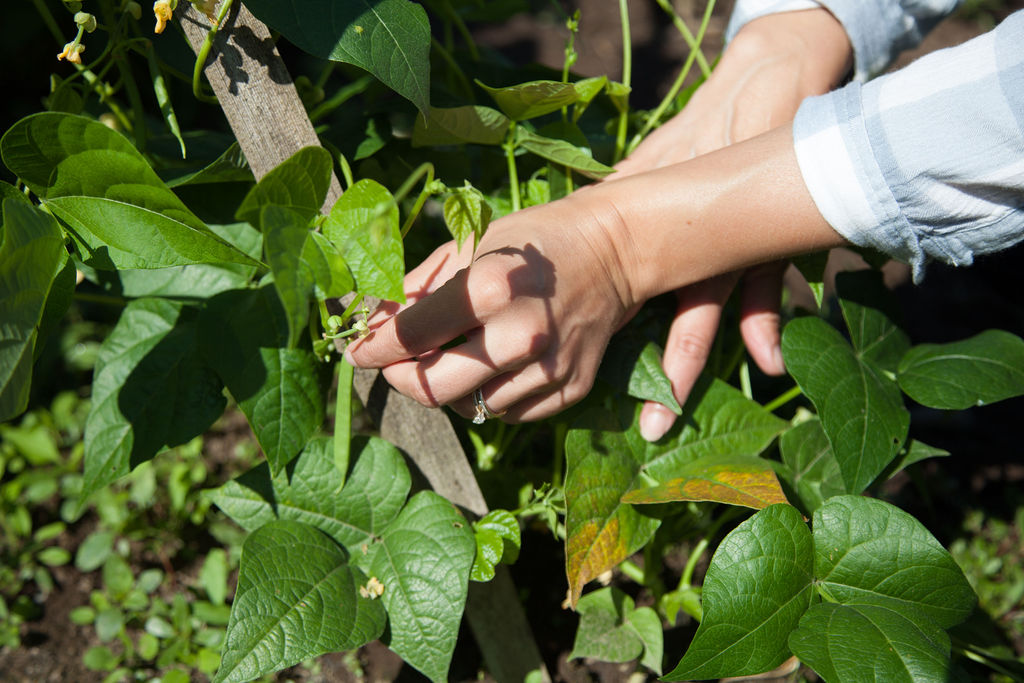
Myth #5 – Gardening Is Too Hard
I won’t lie and say you won’t ever have struggles. There are some years when the weather won’t cooperate, you have extra surprises life throws at you, or one of your crops is wiped out with disease, and you get nothing. It happens to every gardener at one point or another.
The mindset of knowing that there will be struggles and times when gardening is challenging will keep you grounded. It won’t be the end of the world if a crop you planted doesn’t produce or you have a wetter-than-normal spring, some things are out of our control. Just roll with it and keep on trying!
Every year, I learn something new, but no matter how much of a setback I may have with a crop, we always plant another garden come spring. We shouldn’t be so removed from our food that we leave its growth solely in the care of others.
I take what works for me with what I have to work with and let the rest go. It’s a labor of love, resulting in healthy, nutritious real food for my family. I find it’s definitely worth the work and very rewarding.
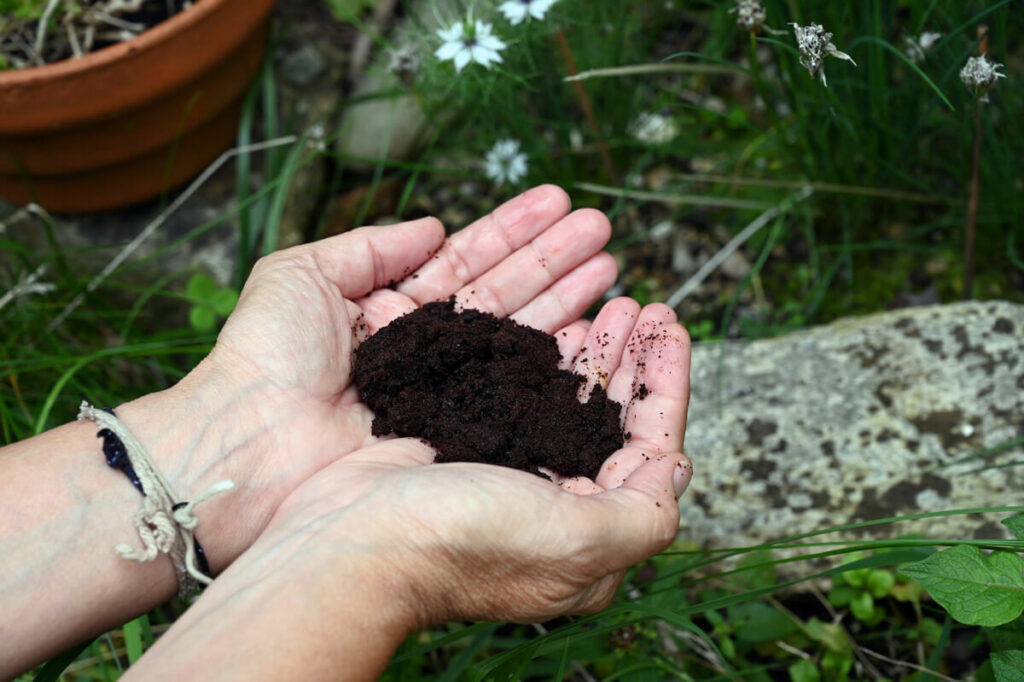
Myth #6 – Coffee Grounds Acidify the Soil
There is no denying that coffee grounds contain organic materials and compounds that can potentially influence soil acidity. However, the extent of their impact on soil pH is often exaggerated. The truth is that coffee grounds alone do not significantly acidify the soil.
The myth surrounding coffee grounds as a powerful soil acidifier may stem from their initial pH, which ranges from around 6.5 to 6.8. This slight acidity might lead some to believe that coffee grounds can effectively lower the pH of alkaline soil. However, the reality is that coffee grounds have a limited ability to alter soil pH.
That said, coffee grounds still benefit your garden and can be useful in your compost pile. They are rich in organic matter, which can improve soil structure, moisture retention, and nutrient availability. You can learn more about these benefits and ways to use coffee grounds in your garden here.

Myth #7 – Addressing the Mulch Wars
Wood chips, made from various types of trees, have gained popularity as a mulching material, and I couldn’t resist testing areas of our garden with wood chip mulch. I recorded my results to determine if wood chips in the garden are beneficial and found there are some valid reasons for their appeal.
After a few mistakes with wood chips in the garden, I even visited Paul Gautschi, the creator of the Back to Eden Gardening Method, to figure out what went wrong.
Wood chips can help conserve soil moisture, regulate soil temperature, and suppress weeds when applied in a thick layer. Plus, it improves drainage when they break down slowly, which means less frequent mulch replenishment.
However, it’s important to note that wood chips may not be the best choice for every garden situation. While they offer benefits, they also have some drawbacks.
One concern is their potential to tie up nitrogen in the soil as they decompose, temporarily hindering plant growth. This nitrogen deficiency can affect plants with high nitrogen requirements, such as leafy vegetables.
Pro Tip: If you leave the wood chips on the soil’s surface, this isn’t a concern at all. It’s only when the wood chips are mixed into the soil this problem happens.
Additionally, wood chips can create an acidic environment as they break down, which may not be suitable for all plant species. If you have alkaline-loving plants, such as lavender or lilacs, wood chips may not be the ideal mulch for them.
Pro Tip: If you use the entire tree (both green and brown materials) this reduces the chance of creating an acidic environment and, instead, creates the best growing medium for most plants.
Ultimately, the choice of mulch depends on your garden’s specific needs, plant preferences, and personal aesthetics. Consider factors such as soil type, climate, and plant requirements when selecting the right mulch for your garden. Testing your soil ph & and amend acidic and alkaline needs for best results.
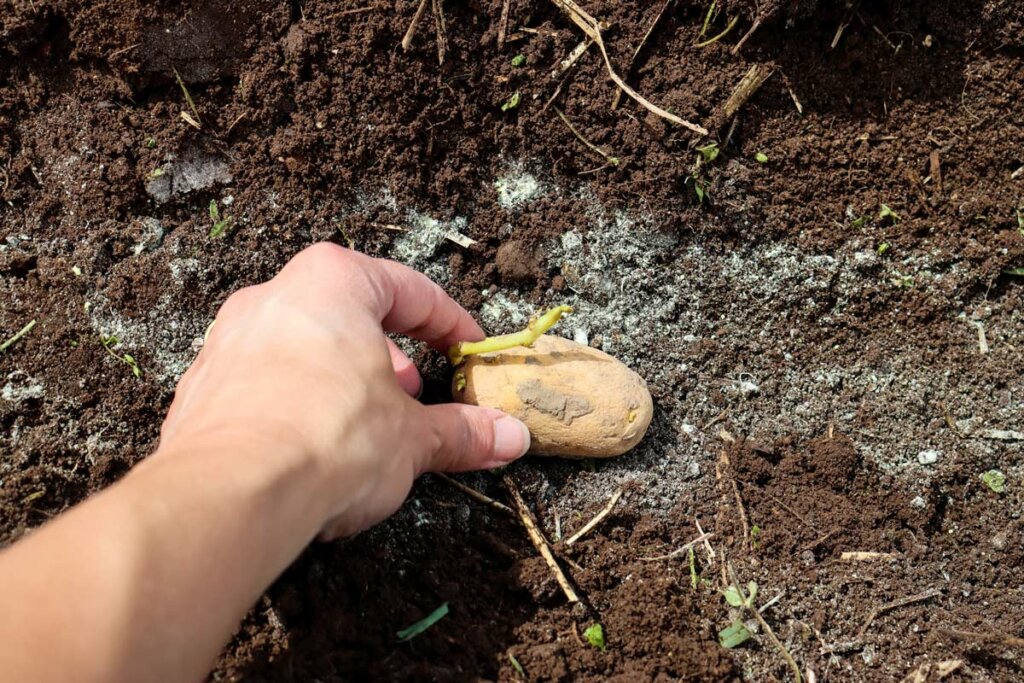
Myth #8 – Plant Potatoes on Good Friday
While the idea of planting potatoes on Good Friday may have been passed down through generations, there is no scientific evidence to support its effectiveness.
This belief likely stems from the association of Good Friday with spring and the start of the growing season. However, other factors, such as soil temperature, frost risk, and local climate conditions, should determine the timing of potato planting.
To ensure a successful potato harvest, it’s important to consider the specific requirements of the potato plant and the optimal conditions for growth. Planting at the right time and following proper cultivation practices will yield far better results than adhering to a traditional date on the calendar.
So, when is the best time to plant potatoes? The ideal time for planting potatoes varies depending on your location and climate. As a general guideline, potatoes should be planted when the soil temperature reaches around 45 to 50 degrees Fahrenheit (7 to 10 degrees Celsius). This typically occurs in early spring, but it may differ in different regions.
Check out my post on planting and growing potatoes to learn more about selecting the right potato varieties, proper planting, and the many growing methods to choose from. Then, make sure you learn how to harvest and store potatoes even if you don’t have a root cellar! (Here’s more on storing root vegetables without a root cellar.)
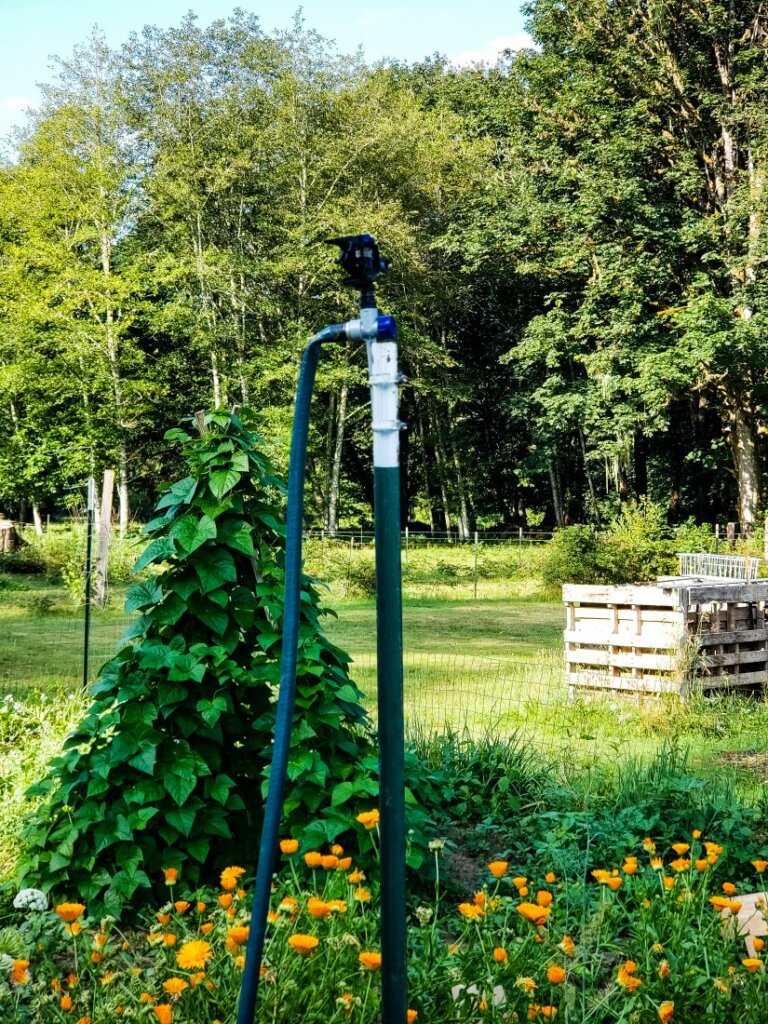
Myth #9 – Plants Should Be Watered Daily
Contrary to popular belief, most plants do not require daily watering. In fact, overwatering can be detrimental to their well-being. Plants have different water requirements based on their species, size, environment, and current growth stage. Watering them too frequently can lead to waterlogged soil, which deprives the roots of essential oxygen and can result in root rot.
My garden watering guide will help you avoid the daily watering trap and teach you how to provide your garden with just the right amount of water to increase your harvest and prevent disease.
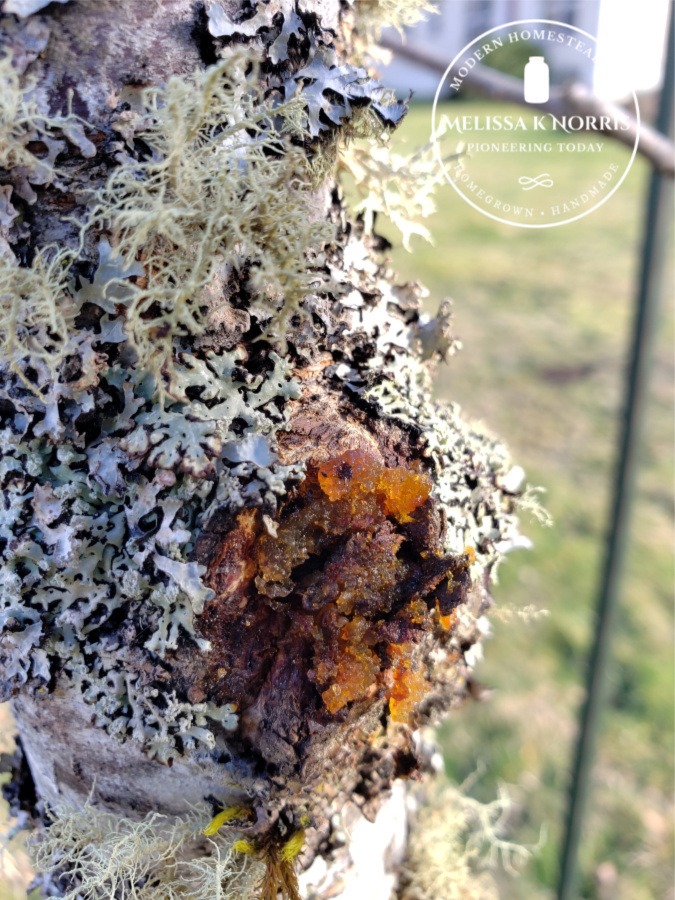
Myth #10 – Tree Wounds Need Dressing
Gardeners commonly believe that tree wounds require dressing to aid in the healing process. However, dressing the wound can actually encourage fungal growth leading to decay. Instead, follow best practices for pruning trees, and allow them to seal off their wounds naturally.
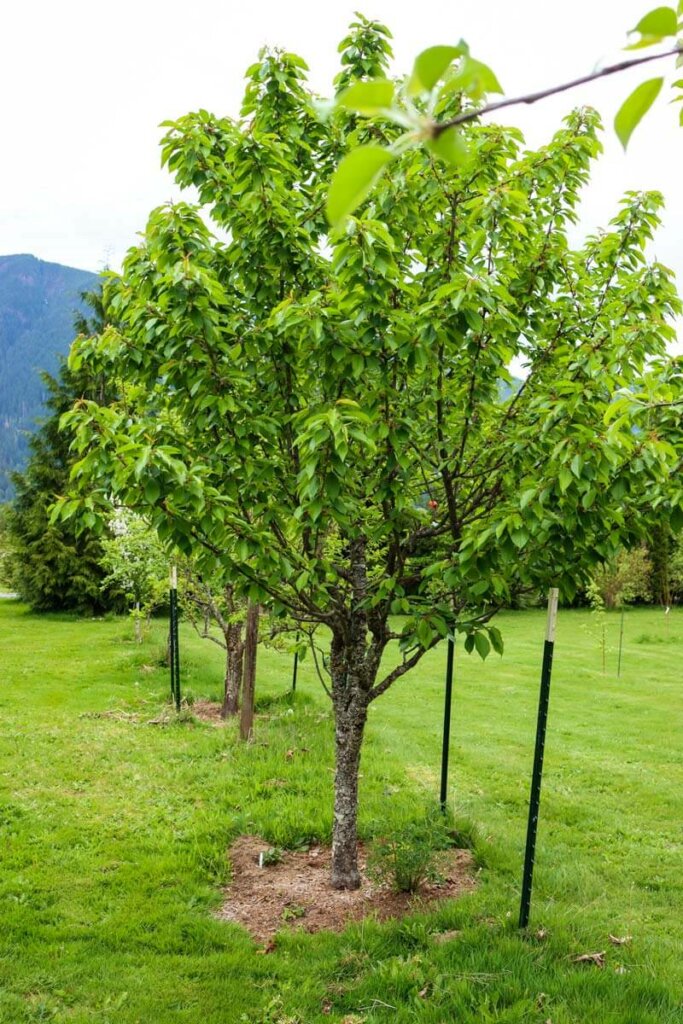
Myth #11 – Newly Planted Trees Need to Be Staked
When it comes to growing an orchard, the question of whether to stake or not can be a subject of debate among gardeners. It is commonly believed that staking provides necessary support to newly planted trees until their roots become established and they can stand on their own.
The idea is that staking prevents the tree from being damaged or uprooted by strong winds or other external factors.
However, recent research suggests that staking may not always be necessary and can even have negative effects on tree growth. When trees are staked too tightly or for an extended period, it restricts their natural movement, which is crucial for developing a strong root system and trunk. Without this movement, trees may become reliant on the stake for support, resulting in weaker roots and a less stable tree in the long run.
If you learn when and how to plant fruit trees properly, you won’t need to stake your trees, exposing them to these potential problems.
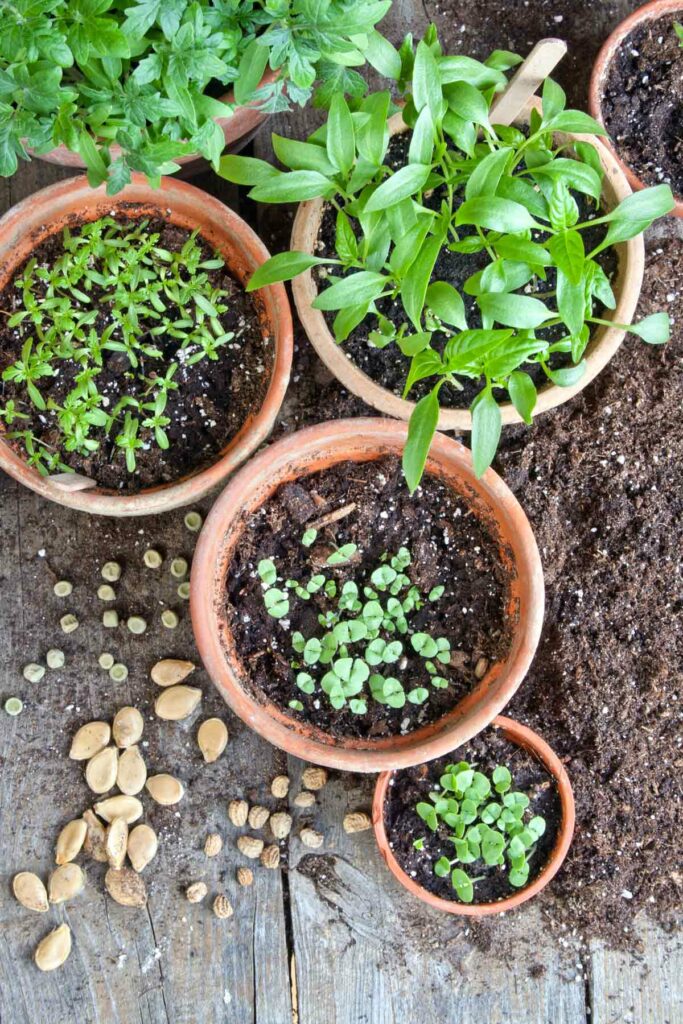
Myth #12 – Place Gravel in Containers for Better Drainage
The addition of gravel at the bottom of containers actually impedes drainage rather than improving it. When water encounters the gravel layer, it creates a perched water table. This means that the soil above the gravel becomes waterlogged, leading to poor root growth and an increased risk of root rot.
The key to proper drainage in container gardening lies in the soil composition itself. You can read more about the right soil to use, along with my best tips for container gardening here.
And there you have it. By separating fact from fiction, you can confidently produce a thriving garden. Remember, gardening is a journey of learning and experimentation. Stay curious, stay informed, and most importantly, stay passionate about increasing your self-reliance. Happy gardening!
Resources

Other Articles You May Enjoy
- Our Food Production Plan & How to Plan for Livestock
- Grow Your Own Food – Helpful Tips For The Beginning Gardener
- Container Gardening for Vegetables- Everything You Need to Know
- How to Plan Your Best Garden & Harvest for a Year’s Worth of Food
- How Much to Plant Per Person for a Year’s Worth of Food
- How to Grow a Large-Scale Garden & Livestock Without Acreage
- Time-Saving Tips For New Gardens
- How Much Time Per Week to Raise a Year’s Worth of Food
